Birds & Other Animals

In the past two weeks, I have photographed the usual animals visiting our backyard. So while no animals are new, hopefully you will enjoy these new poses.
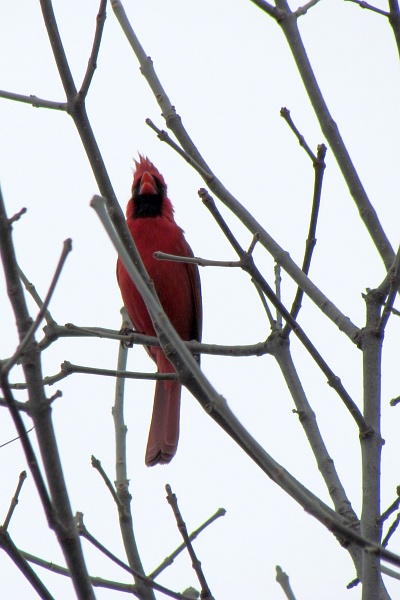
Male Cardinal Sits in Our Ash Tree (17-Mar-17; © Richard L. Bowman)
Comparing the Common Grackle and the Starling is easier than one might first think. Note, in the photos below, the yellowish-white ringed eye of the Common Grackle. It also has a rather longish tail and black beak. In sunlight its black feather coat glistens with iridescent greens and blues.
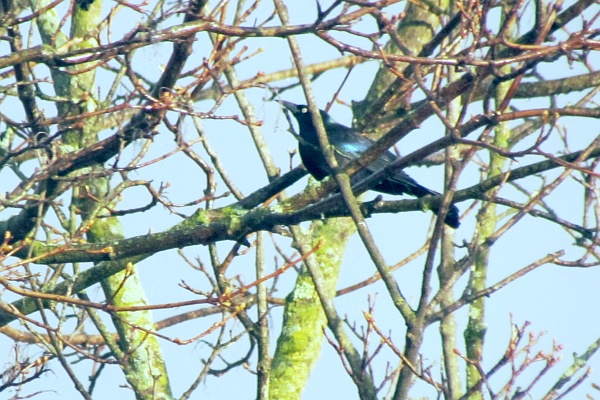
A Common Grackle Rests in a Tree (18-Mar-17; © Richard L. Bowman)
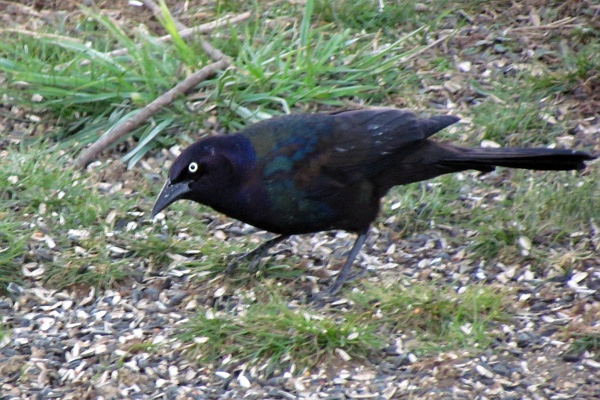
A Common Grackle Searches for Food on the Ground (22-Mar-17; © Richard L. Bowman)
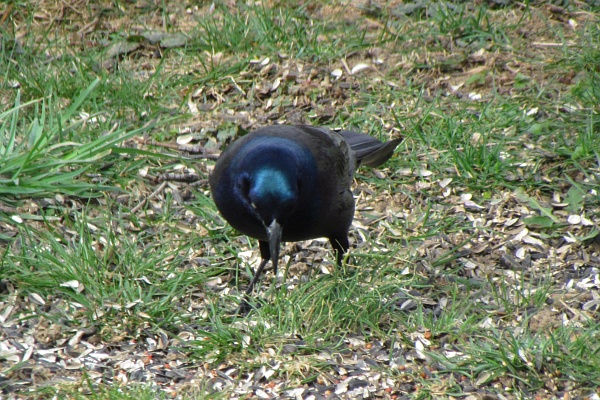
Common Grackle Turned toward the Camera (26-Mar-17; © Richard L. Bowman)
On the other hand, European Starlings are generally shorter with stubbier tails and yellow beaks. They often show-up with white--speckled black plumage.
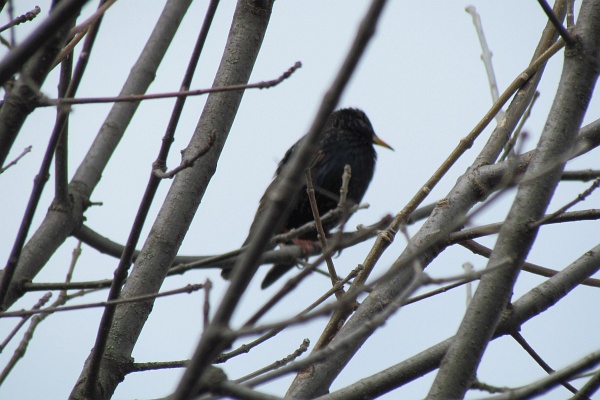
European Starling Hides in Our Ash Tree (14-Mar-17; © Richard L. Bowman)
The Gray Squirrel is a nuisance at times, but it is also a fun animal to watch as it darts around on the ground, pauses to eat as it sits on its hind legs, and also scurries among tree branches.
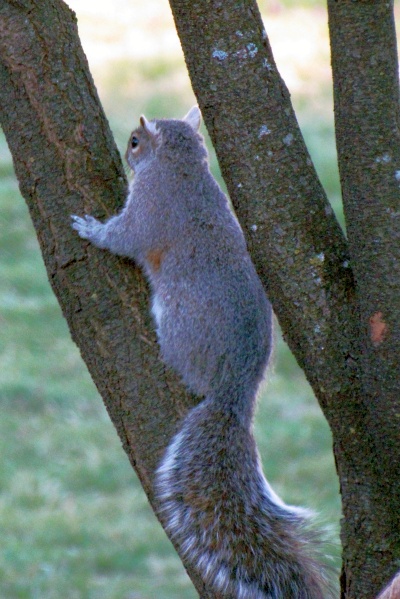
Gray Squirrel Climbs a Tree Trunk (22-Mar-17; © Richard L. Bowman)
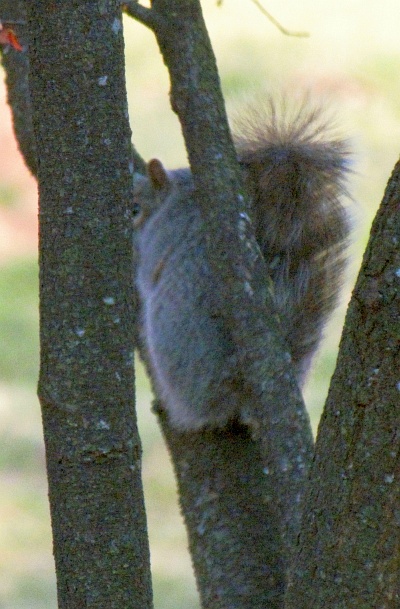
Gray Squirrel Pauses to Look Back at Me (22-Mar-17; © Richard L. Bowman)
And for those of us who are US residents, we know that spring begins when we see the first American Robin in our lawns. I had shown a photo earlier, but now I have seen several scratching for food below our feeders. Here are two pictures.
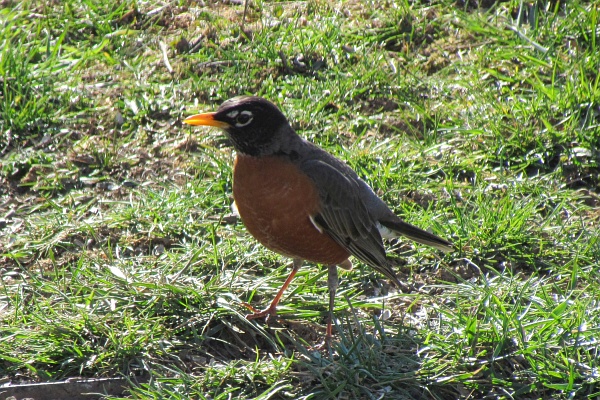
American Robin in Profile on Lawn (23-Mar-17; © Richard L. Bowman)
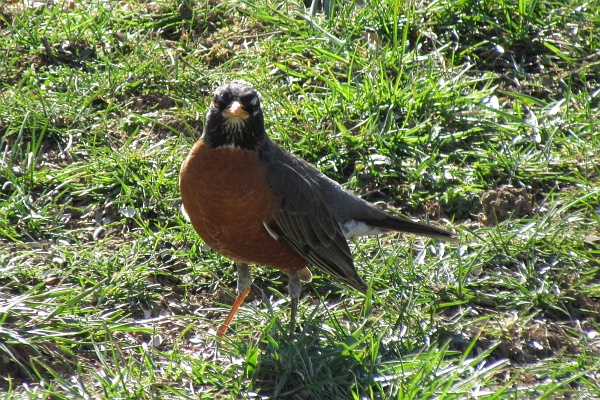
American Robin Looking at the Camera (23-Mar-17; © Richard L. Bowman)
The largest common backyard visitor and the most subdued is the Mourning Dove.
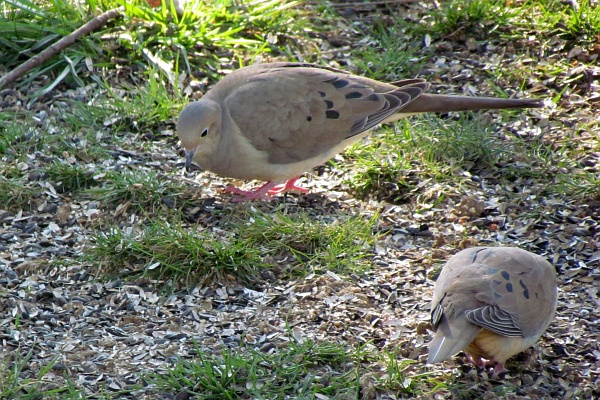
Two Mourning Doves Work Next to Each Other But Not in a Flock (23-Mar-17; © Richard L. Bowman)
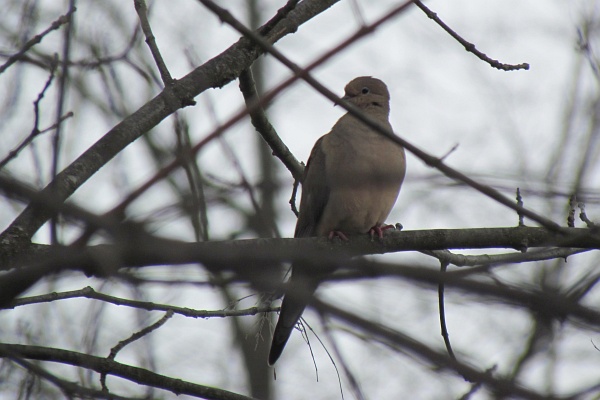
A Mourning Dove Rest in a Tree (28-Mar-17; © Richard L. Bowman)
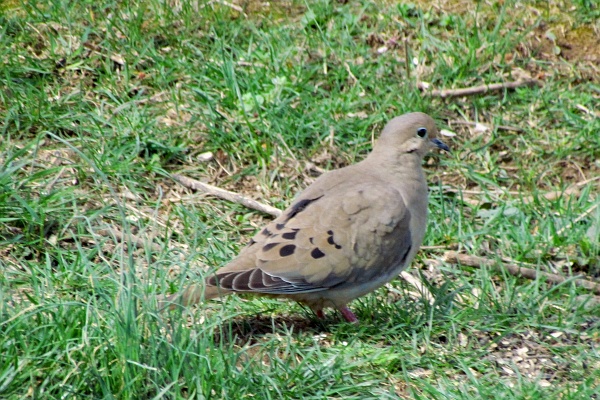
One Mourning Dove Looks for Food among the Emerging Grass (29-Mar-17; © Richard L. Bowman)
The last three photos are of separate kinds of birds but ones that have still been common over the winter.
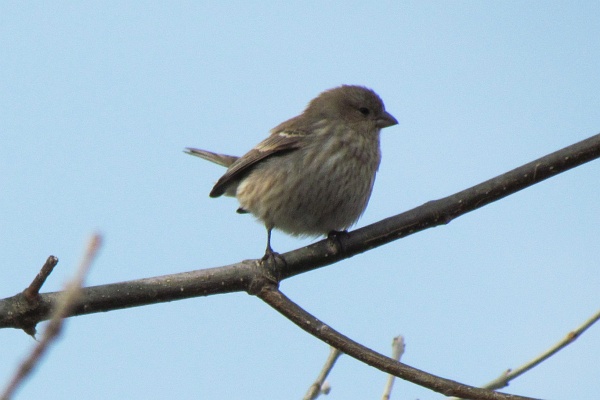
A Female House Finch Sits on a Slender Branch (26-Mar-17; © Richard L. Bowman)
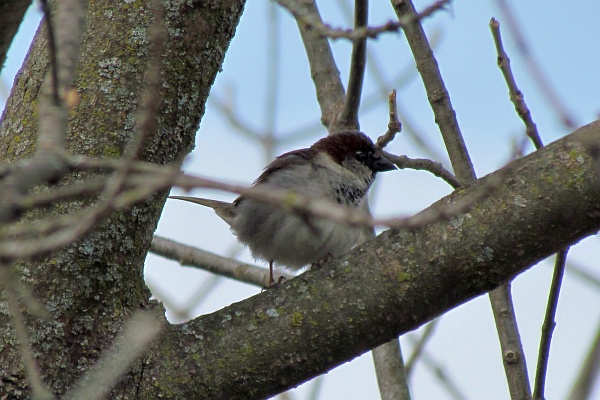
A Male House Sparrow Also Sits in a Tree (26-Mar-17; © Richard L. Bowman)
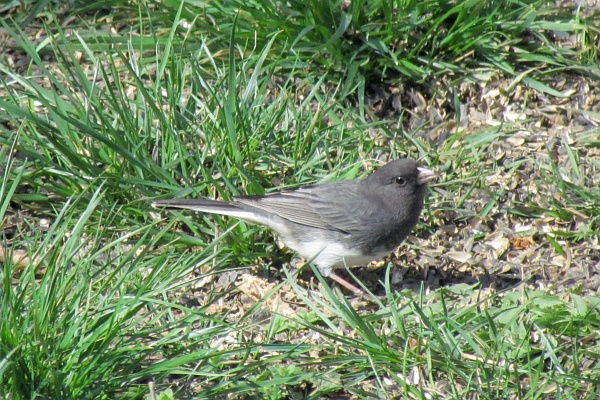
A Junco Hunts for Seeds in the New Grass (29-Mar-17; © Richard L. Bowman)
While I like to see new and unique kinds of birds, there is also something good about see our regular visitors come back again and again. "Thank you, God, for the beauty around us. Help us to remember to take the time to notice it."
March 19, 2017
On March 14, we had our largest snowfall of the season. I measured 2 inches (5 cm), but it was more than that due to the ice and sleet that was mixed in. In any case, snow provides a nice background against which to photograph birds.
The first bird I captured in the snow turned out to be a rare one for me, the White-throated Sparrow. Initially I thought it had collected snow under its chin and breast as it hunted for seeds, but then I googled it and from a photo identified it. To confirm my identification, I visited "All About Birds" created and maintained by the Cornell Lab of Ornithology.
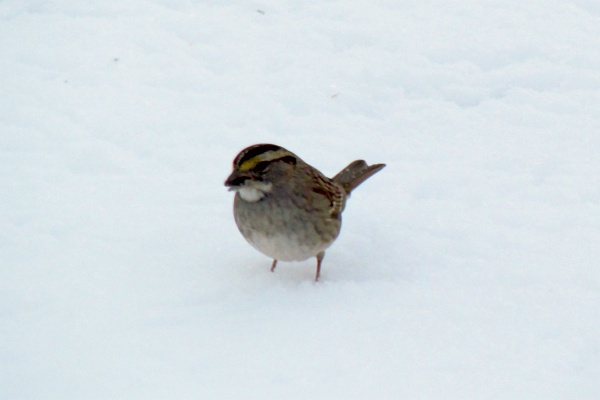
White-throated Sparrow in the Fresh Snow (14-Mar-17; © Richard L. Bowman)
The other photos I got are of old friends.
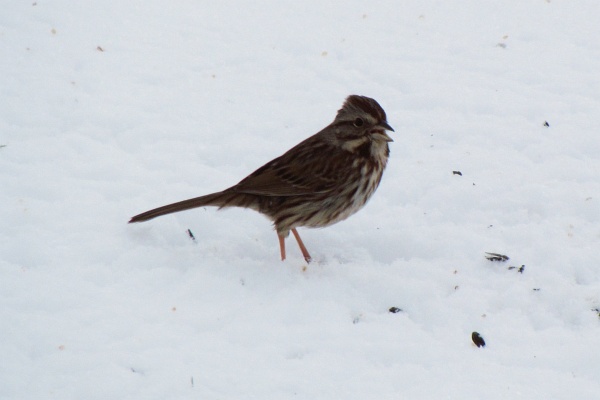
Female House Finch in Snow (14-Mar-17; © Richard L. Bowman)
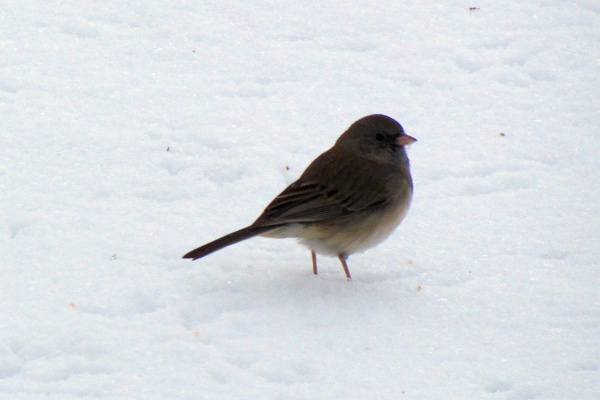
Junco Stands in the Snow (14-Mar-17; © Richard L. Bowman)
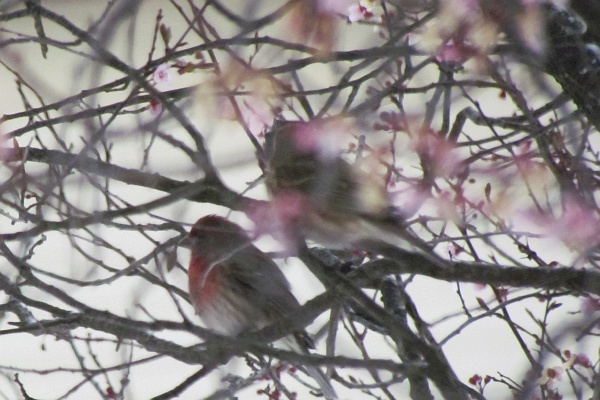
Male House Finch Hides in a Bare Tree (14-Mar-17; © Richard L. Bowman)
A day later, some of the snow was still on the ground and so were the birds.
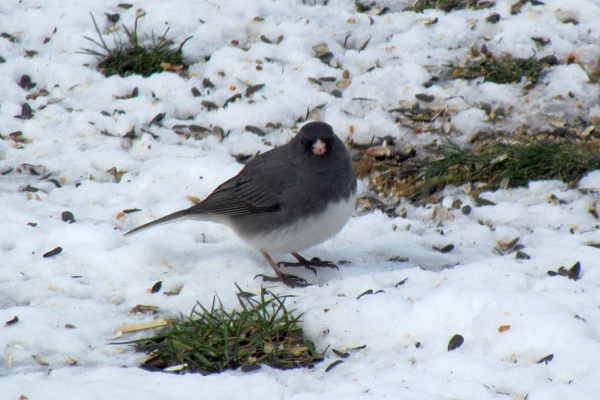
Junco Check Out the Photographer (15-Mar-17; © Richard L. Bowman)
A few days earlier, I had captured more old friends.
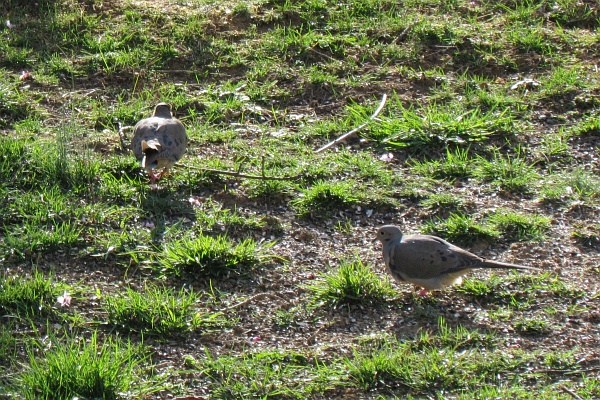
Two Mourning Doves in the Late Afternoon Sun (10-Mar-17; © Richard L. Bowman)
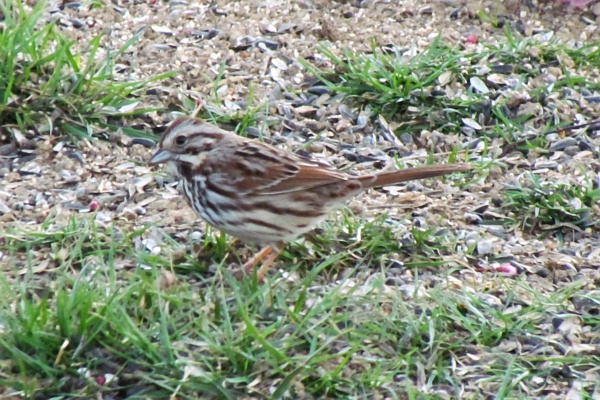
Female House Finch Looking for Seeds (10-Mar-17; © Richard L. Bowman)
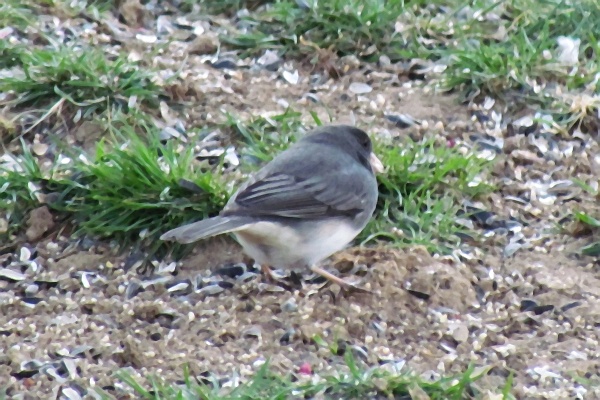
Junco Also Searches (10-Mar-17; © Richard L. Bowman)
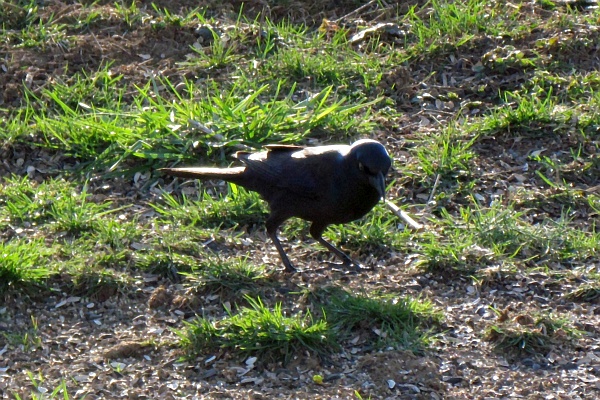
Grackle Stands on Spindly Legs (8-Mar-17; © Richard L. Bowman)
As is usually the case, since my eyesight is so bad that I can no longer drive, I do not know precisely what I have taken a photo of until I can bring it up on the computer. Below is one such picture. Two birds are flying into our tall feeder, one is flying away, and one is peacefully eating at the feeder.
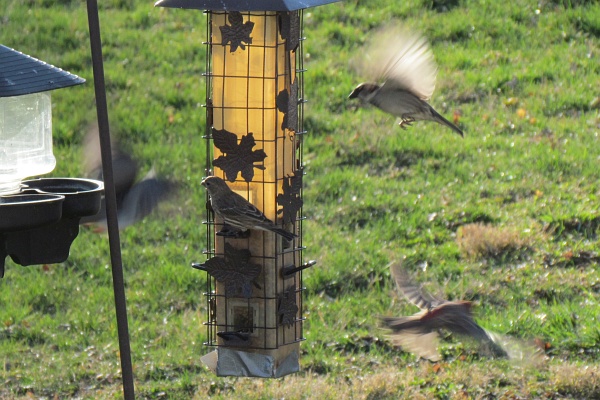
Female House Sparrow Watches the Comings and Goings Around Her (8-Mar-17; © Richard L. Bowman)
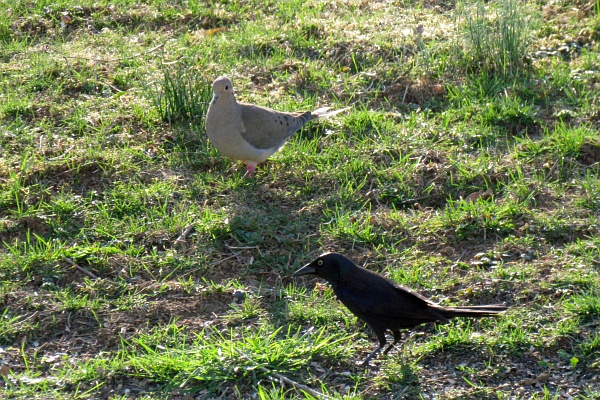
Mourning Dove and Common Grackle Coexist Hunting for Feed (8-Mar-17; © Richard L. Bowman)
One evening before the Sun set, I found a lot of birds sitting high in a neighbor's American Sycamore tree surrounded by the round balls of "fruit."
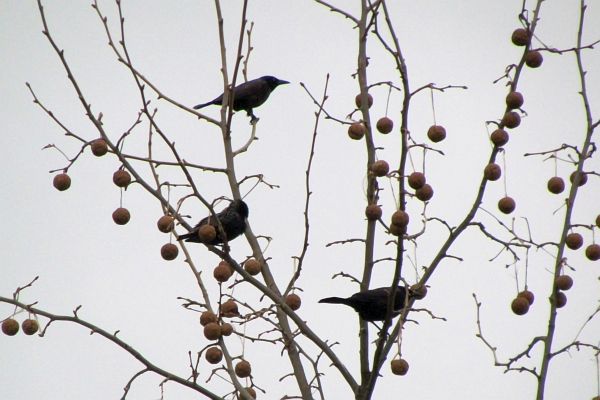
One Starling and Two Grackles in a Sycamore Tree (7-Mar-17; © Richard L. Bowman)
That same evening I discovered an American Robin singing.
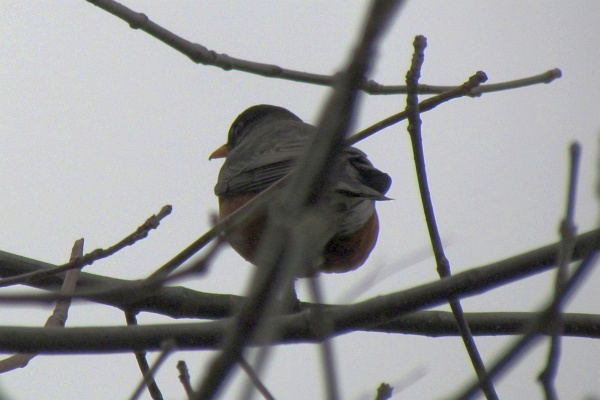
In Late Evening an American Robin Heralds the Arrival of Spring (7-Mar-17; © Richard L. Bowman)
Two days earlier, I found Grackles in the top of a tall tree.
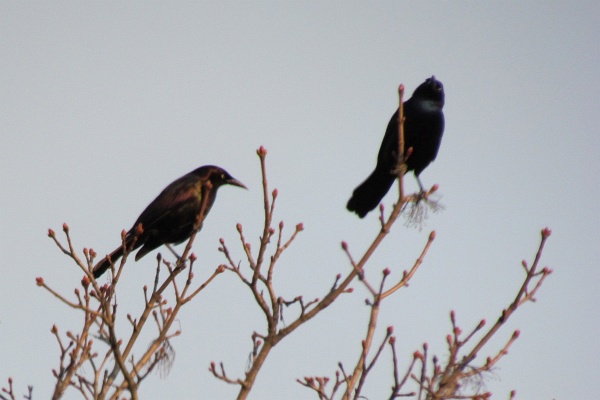
Two Common Grackles Atop a Tall Dormant Tree (5-Mar-17; © Richard L. Bowman)
Back to the smaller Flowering Plum tree in our backyard, during the winter I have been able to find many birds who seem to think they can hide there. The male Cardinals are easy for me to notice even if I cannot see what my composition is until I get them on my computer.
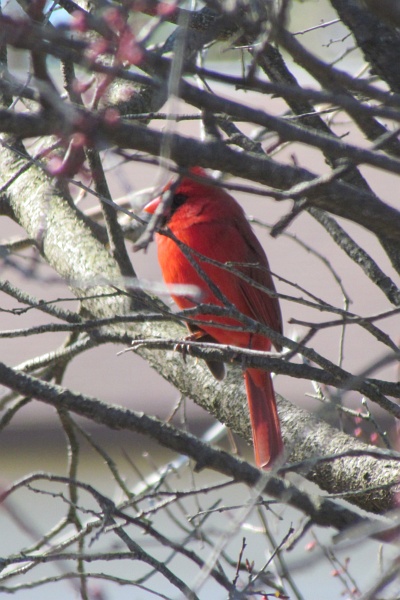
Male Cardinal Trying to Hide in a Tree (4-Mar-17; © Richard L. Bowman)
To finish out this post, here are a number of different birds in a variety of settings.
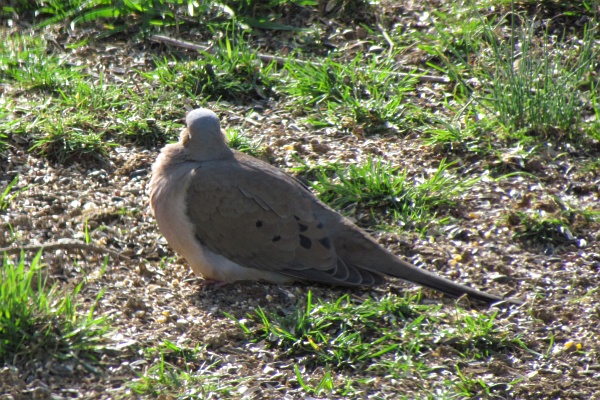
Mourning Dove Trying to Stay Warm (2-Mar-17; © Richard L. Bowman)
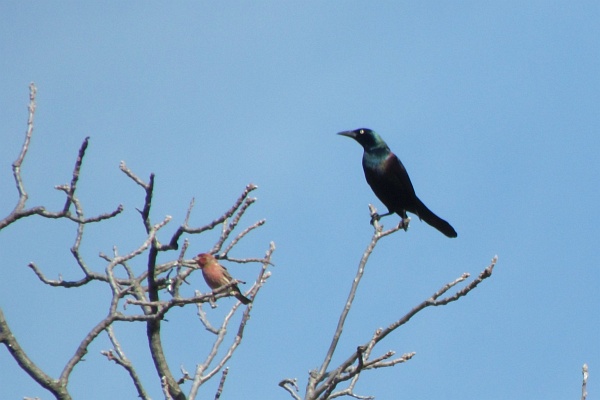
Surprise Composition: Common Grackle and Male House Finch (24-Feb-17; © Richard L. Bowman)
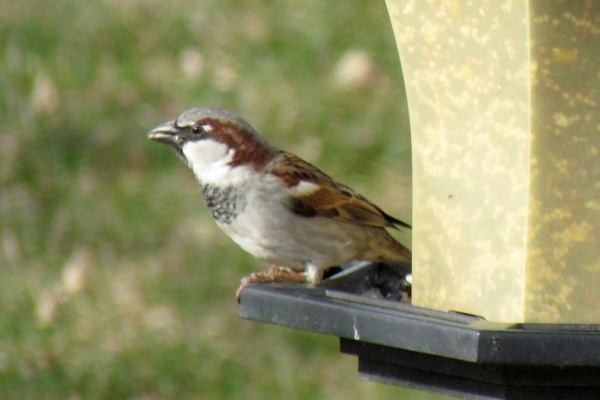
Male House Sparrow Visits Our Feeder (18-Feb-17; © Richard L. Bowman)
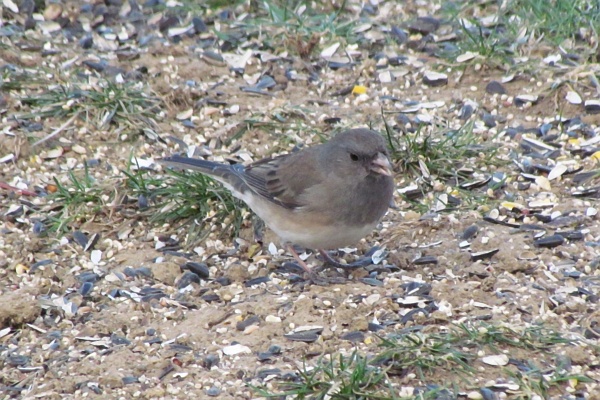
Junco Finding Food (17-Feb-17; © Richard L. Bowman)
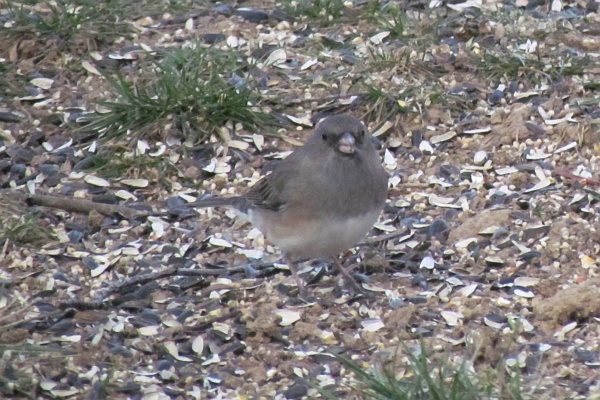
Junco Poses Again (17-Feb-17; © Richard L. Bowman)
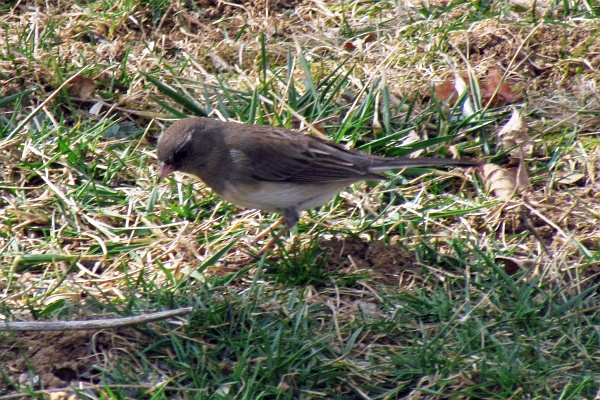
Junco Searches for Seeds (12-Feb-17; © Richard L. Bowman)
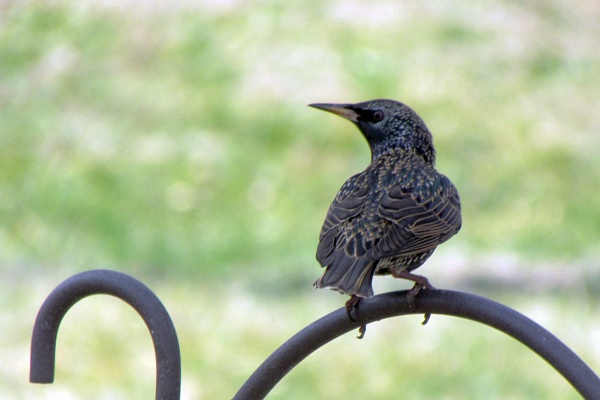
Starling Perches on Our Shepherd's Crook (12-Feb-17; © Richard L. Bowman)
When I think that I am seeing too many Starlings, Common Grackles, and Juncos, I just have to pull up my blog page and insert the photos I have collected to see what beauty and variety I have captured. I thank God for this beauty and variety!
© 2014-17, Richard L. Bowman
Response Form